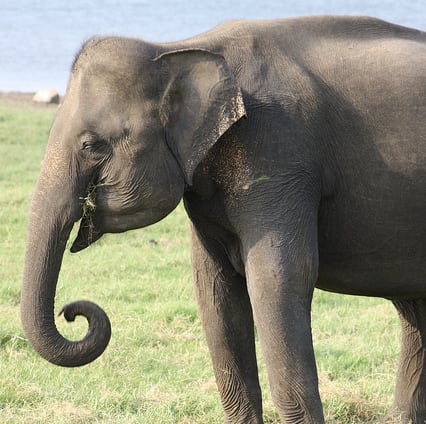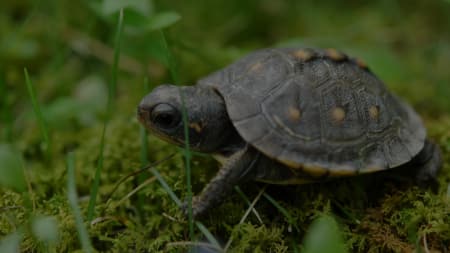
Discuss: Can you think of any way for your team to win? Is there something you could do to make it harder for the elephant to pull?

Practice: Think about each action below. For each one, ask yourself: Is it a push or a pull? (Answers on next slide.)
pinch
tug
smack
drag
lift
Can you come up with any other verbs where there's either a pull or a push?
| squeeze | = | push |
|---|---|---|
| pinch | = | push |
| tug | = | pull |
| smack | = | push |
| drag | = | pull |
| lift | = | It depends how you lift. You could push up on a thing to lift it, or you could pull on it too. |

Discuss: Do you have any ideas for how you could get the watermelon to burst using rubber bands?

The next slide features our newly revised Activity Video where students will learn how to make "Hopper Poppers."
If you need to, you can still access the previous version of the activity.
Constructing the hopper takes students about 20-25 minutes. Practicing using their hopper and then completing the "High Hop Score Card" takes an additional 20 minutes.
If your time is limited, there is a natural stopping point after Step 6. Have students write their names on materials, then collect them and resume the activity next science class.




















Extend this lesson
Below are ideas for extending this topic beyond the activity & Exploration which you just completed.
- End of Mystery Assessment and Answer Key
- Reading (fiction): Fishing for Forces
- Online videos: This tug-of-war match shows how important the push of feet against the ground is.
- Activity: Tug-of-War (no elephant needed)
Tug-of-war is a great way to give students a feel for forces. You’ll need a sturdy rope, a room with a slick floor, and masking tape. Use masking tape to mark the center of the rope and make a line on the floor.
Discuss with the students how to make two, evenly matched tug-of-war teams. Have the teams play tug-of-war, starting with the center of the rope directly above the line.
Then have a rematch with one simple change: The winning team must take their shoes off and play in their stocking feet. (They’ll feel like an elephant on roller skates.)
If students mention friction here, let them know you’ll be exploring that topic fully in a future Mystery.



